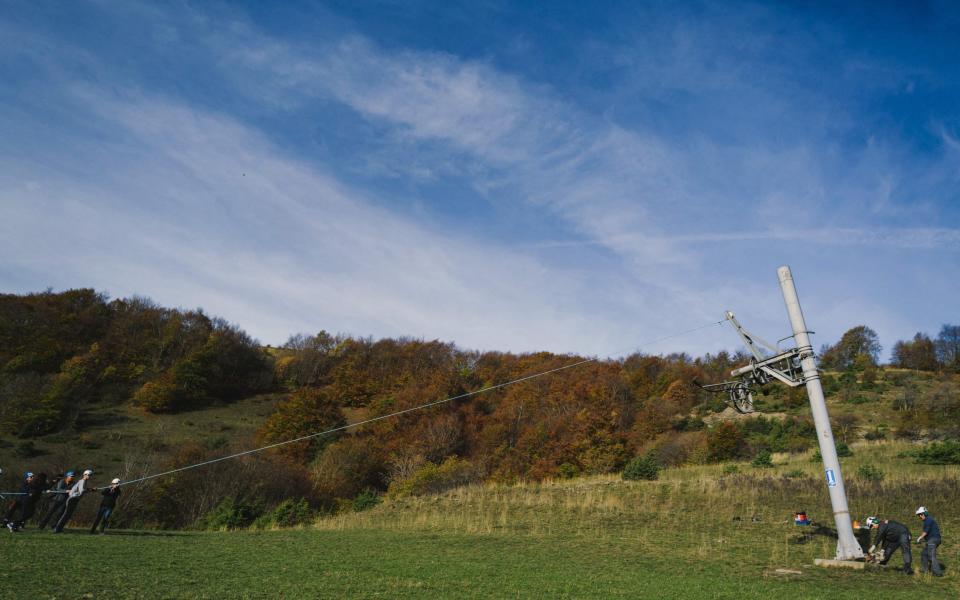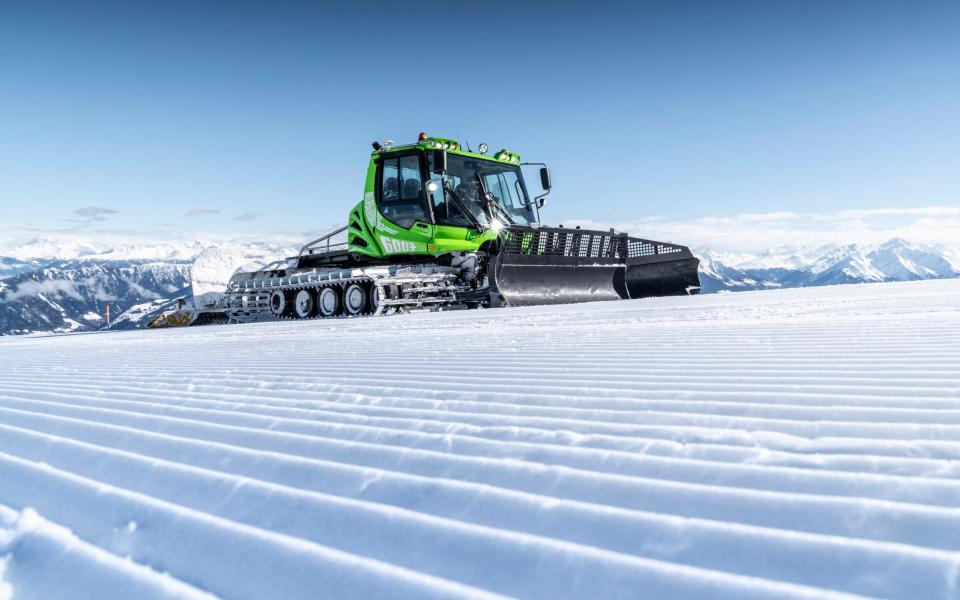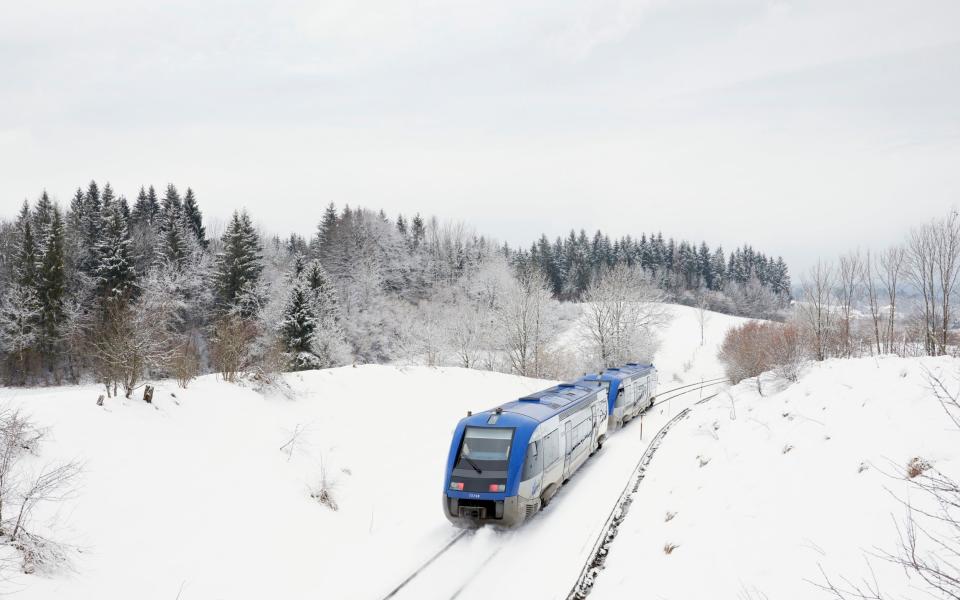Will climate change kill ski holidays – and if so, when?

If you love skiing, make the most of your passion – another recent spell of mild weather in the Alps, combined with torrential rain, has begun to demonstrate an alarming pattern for our winters and the impact of climate change on ski resorts.
With 2023 the hottest year globally ever recorded, the impact is more stark than ever before. Ski holidays in the Alps, particularly at Christmas, are now dramatically different to what they once were, with bare slopes and rain becoming the norm, along with queues and crowded pistes as skiers vie for decent snow conditions.
While the mountains are not as uniformly bare as in January 2023, with decent piste skiing still to be found in many areas, conditions are particularly bad in southern France and northern Italy — where 2024 began with the highest temperatures in 130 years (up to 25ºC in some towns), threatening the ski season across the entire Piedmont region.
The winter began with stellar conditions across Europe, allowing some resorts to open early, but temperatures have fluctuated since, with mid-December rain washing snow in low-lying resorts forcing some, such as Morzine, to delay their opening, while others were battered by cold and wind.
Fraser Wilkin of snow forecasting website Weather to Ski said: “The rain/snow limit has been proving extremely difficult to forecast and remains volatile, with considerable differences from place-to-place and from one day to the next. But looking at the wider picture, this is now becoming a pattern to the start of winter.”

With such mixed conditions, the mood among locals in the mountains is not high.
IFMGA guide Fred Buttard, whose outfit Upguides offers off-piste ski trips across the Haute Maurienne Valley on the French/Italian border, said: “Yes there have been good days, but the past 10 Christmases have been bad almost every time.”
December conditions in normally storm-bound Hokkaido, Japan, were dry this season, with rain washing away early snow, while snow levels remain low across Western US and Canada, too.
Ambassador and founder of Protect Our Winters Canada, Mike Douglas, said the situation in Whistler, where he lives, is unprecedented. “Our valley is completely green, and while there are still pockets of decent skiing to be found, I’ve been mountain biking this week and I think the idea to think about moving forward is adaptation and being flexible with your sports and the way you view a winter vacation.”
And it’s not just winters that are affected. In late July, the freezing point in the Alps reached a new record of 5,148m, nearly 400m above Mont Blanc and 70m higher than the previous record of 5,117m from July 1995 — meaning no mountain in Europe froze.
These are worrying times, and the impact of climate change on ski holidays getting harder to ignore.
How bad could things get, and how fast?
“Glaciers in the Alps show retreats from 1850 or even before, but things have really started accelerating since the late 1970s,” says climate scientist Piers Forster, International Panel on Climate Change (IPCC) coordinating lead author and director of the Priestley International Centre for Climate at the University of Leeds.
“Snow records for the Alps show snow depth declining by over 8.4 per cent since the 1970s and snow cover decreasing by 5.6 per cent per decade.” Global temperatures have also risen by around 1°C during the 20th century – that increase was doubled in the Alps to 2°C.
The ski season is now a month shorter than in the 1970s and the snowline – determined by the altitude at which rain turns to snow – is rising, which may, by the end of the century, force skiers to crowd into resorts with the loftiest altitudes. By 2050, it is feared that ski resorts below 1,200m are unlikely to have the snow cover and temperatures to function at all.
“It is clear today that the way we have been using the alpine environment is not viable. We are starting to see ski resorts having to move their ski areas because glaciers are already disappearing – this is only the beginning,” says Dr Heïdi Sevestre, a glaciologist. She warns the value of glacial ice “is pretty much priceless… Every inch is worth saving.”
Where is at risk?
With ski tourism currently generating €28 billion of income in the European Alps every winter, ski resorts stand to lose more than just snow.
Christine Ferrière, deputy manager of Savoie Mont Blanc, a conglomeration of 112 ski resorts across France ranging from Chamonix to Courchevel to La Clusaz, has a gloomy outlook: “Any resort below 1,500m probably doesn’t have a future in the winter – these resorts know it and have started thinking about how to diversify, they know the income won’t be as high as it is today. It’s a different future ahead.”
Not all predictions are so pessimistic, however. Anita Baumgartner, marketing manager for the SkiWelt area in Austria argues that location is as important as altitude. None of the six Tyrolean resorts that make up the SkiWelt, including Söll (700m), Hopfgarten (650m) and Ellmau (800m) are over 1,000m in altitude and the area’s highest point, the Hohe Salve, is just 1,829m.
“We are on the northern side of the Alps, like St Anton in the Arlberg, so even though we are very low, when the weather comes from the north we get rain in the summer or snow in the winter, so this is the main thing – elevation isn’t the most important here like it is in the central Alps.”
Indeed studies from neighbouring Kitzbühel show just a 12cm decline in snow levels over 126 years, says ski tourism researcher Günther Aigner, author of Zunkunft Skisport website. He argues that the patterns of snowfall in winter are not yet clear enough to panic.
Piers Forster stresses that things are changing fast everywhere though. “The latest analysis shows that the Alps are pretty badly off, as they are both warming and drying,” he says. “But the Himalayas are also in big trouble. The Canadian Rockies are warming faster than the 0.3ºC per decade of the Alps, but started colder so are OK in terms of snow cover for now.”
Big or small, no ski resort is immune.
What will change?
The main challenges to the ski and mountain communities are the rising snowline, disappearing glaciers and unpredictable weather patterns. And resorts are already adapting, bolstering their summer activity schedules, rethinking infrastructure and piste layouts – and even creating beginner ski areas at the top, rather than the bottom, of their slopes.
For many operators and their skiing clients, that means aiming high. British-run VIP Ski, which opened Bear Lodge in Arcs 1950 in 2022, operates 85 per cent of its business above 1,850m. Managing director Andy Sturt says just a decade ago, the average altitude of its beds was 1,566m.
“We haven’t built anything under 1,850m for the past 10 years because, with the vast majority of our guests only skiing one week a year, we do not wish to sell a holiday with any caveat with respect to the snow conditions.”
He added: “At these altitudes, I have absolute confidence that skiing will survive climate change, even at the most pessimistic temperature forecasts.”
Resorts are taking a confident stance too, working hard on strategies to save their slopes and income. Laax in Switzerland is moving towards being carbon-neutral by 2030, while also stopping the use of fossil fuels and building carbon-positive buildings. The resort asks guests to voluntarily donate CHF1 per overnight stay to a “Greenstyle Fund” to help finance sustainable projects in the region.

Serre Chevalier Vallée in France has invested €4 million in renewables – wind, solar and hydro – since 2017 which Patrick Arnaud, managing director of SCV Domaine Skiable, says has been a tremendous success.
“Of course it has been a learning curve – for example, there was too much wind at altitude for one type of tall turbine, which was destroyed. So now we use a different kind that is only 12m high and can withstand 200kph. But solar panels work far better at altitude where the UV is more intense – the panels work from glare from the snow as well as direct sunlight.”
But Arnaud says despite their green strategy, Serre Chevalier cannot fight climate change entirely and is installing a high-altitude beginner’s area at the top station (2,255m), on the recommendation of French company ClimSnow – one of several companies now working with ski resorts to model the future impact of different scenarios according to IPCC projections.
Artificial snow-making is key. And while resorts are increasingly installing more intelligent and efficient snow-making systems that employ GPS systems and drones to keep the slopes maintained without wasting a drop, snow cannons are the elephant in the room.
According to the World Wildlife Fund, producing just one hectare of artificial snow requires around 95 million cubic meters of water and 600 gigawatt-hours of energy per year – to the tune of around €136,000.
But start-up venture EcoSki, is working on technology that will help resorts reduce their annual production of artificial snow by between 10 and 40 per cent. Founder and CEO Keiran O’Keeffe, who lives in Val d’Isère, says: “You do need 40-50cm of snow to ski on, but it can be properly produced in a carbon-neutral fashion, saving energy and money.”
If the global community continues to reduce emissions there is a likely – almost 70 per cent – chance that the 2021-2040 warming rate will be lower than over the past 20 years. In his study “2020 Zero In”, Piers Forster says investing 1.2 per cent of GDP in green technologies and industries, and reducing fossil fuel investment by 0.4 per cent would slash greenhouse gas emissions in half by 2030.
These steps would mean there is more than a 50 per cent chance of staying within the Paris Agreement and saving the world’s ski resorts.
Every action now makes a difference, says Prof Forster. “Telling people about it and making changes in our homes and at work really do help. Don’t greenwash your lives through reusable cups. Do the big things – for skiers and Telegraph readers that is flying less and using a bike rather than a car. An electric car if you have to and offsetting your flights if you need to fly with a good-quality offset.
“Skiers are the ones with the biggest carbon footprints but also the ones with the money to change and set an example.”
What does it mean for skiers?
“Nobody can say whether it’s going to be possible to ski at the end of the century, but we do know that in the future we will not be able to ski at some places at some times in the season,” says Patrick Arnaud from Serre Chevalier.
As much as resorts deny that things will change, if the season shrinks, and skiing is confined to fewer resorts, the simple law of supply and demand will dictate a rise in prices.

Richard Sinclair from agent SNO admits that if fewer slopes open, and skiing moves to higher altitudes, prices will increase rather than mountains getting overcrowded.
“But there are always solutions to the problem, such as switching to smaller ski areas further north, like Lapland,” he says, adding: “North American skiers have some incredibly high skiing, and so we might find ourselves making transatlantic flights more often in the future. With the extra Brexit costs, we’ve seen US and Canada ski holidays in line with European prices for the first time this year.”
But flying further to dodge climate change – for obvious reasons – is no long-term solution, and skiers might need to accept they must adapt, believes Arnaud. That could mean spending more, travelling later in the season, and reconsidering their choice of resort.
“It’s not about fighting to produce more and more artificial snow, but to adapt to the natural conditions,” he says. “To accept that we will not be able to ski to the lowest part of our ski area or even produce snow there and that it won’t be about the vertical drop anymore. Skiers need to change their habits.”

